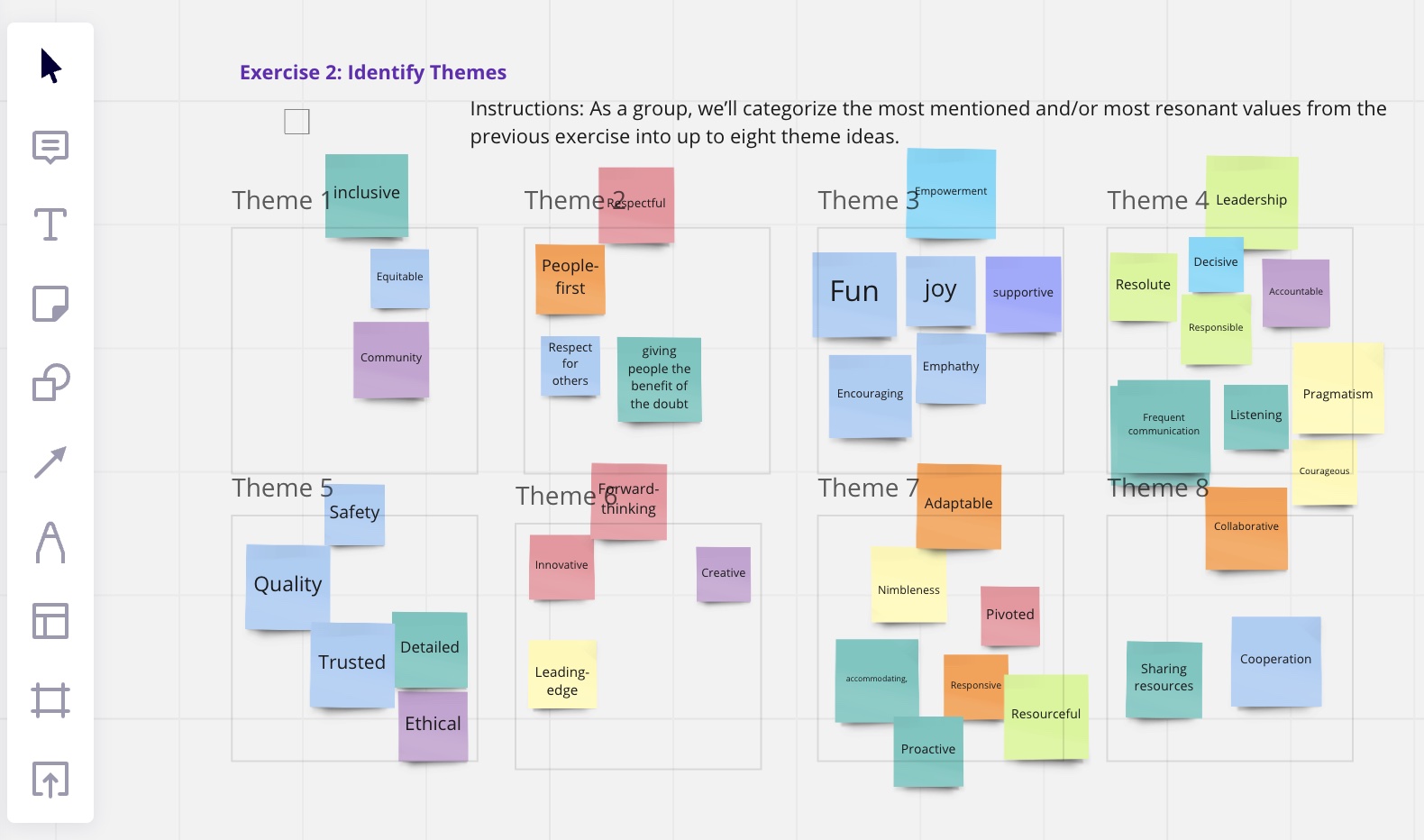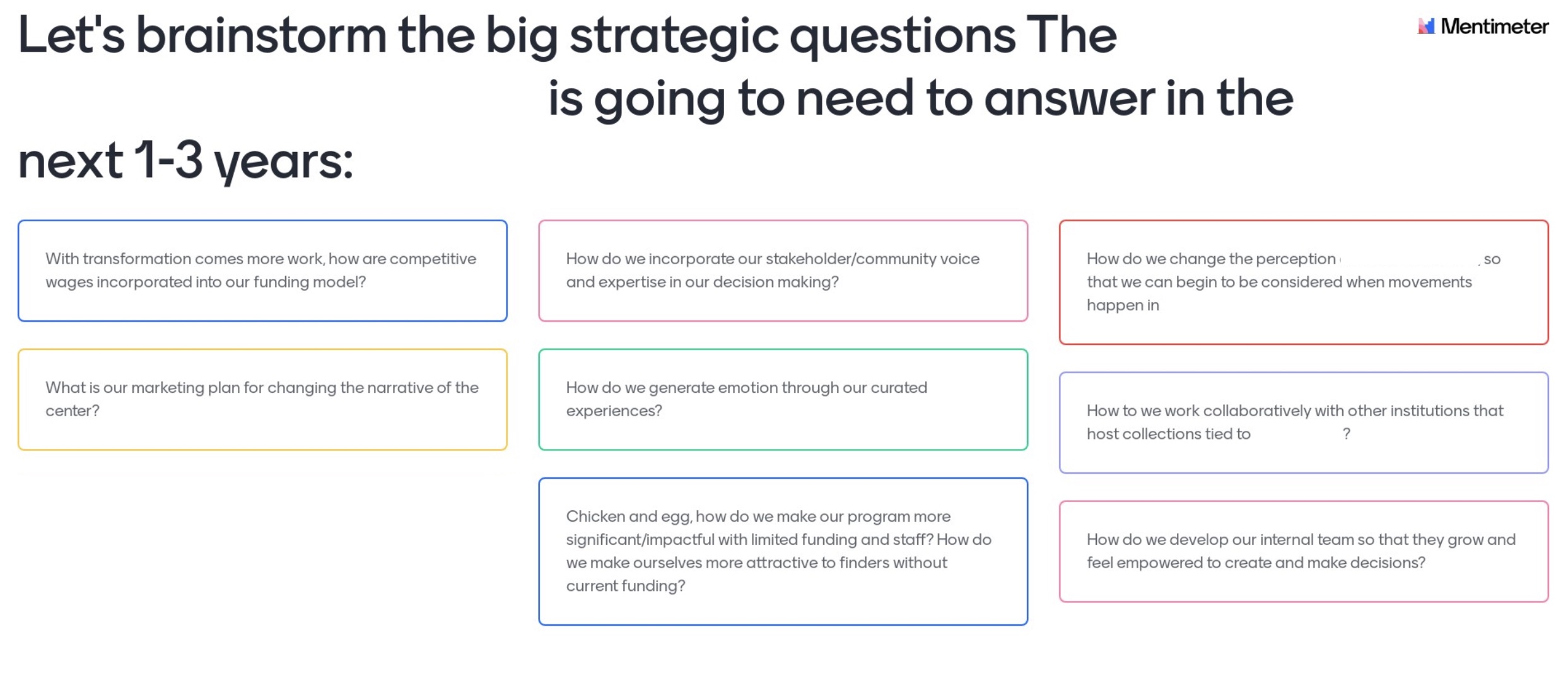It’s hard to believe that we’ve hit three years in this remote/hybrid work world. While I fully recognize that many nonprofit employees are essential workers and have to be on site, there are still many activities that once took place in person that now take place almost exclusively online. Nonprofit strategy development and strategic planning meetings are a great example of this. Prior to March 2020, most strategic planning facilitation took place in person. Think white boards and sticky notes, and rooms of people buzzing with energy.
Of course we still love to visit our clients in person for nonprofit strategy development sessions when we can, but the pandemic taught us it’s not always a must. In fact, we can have very collaborative, energy-filled sessions via Zoom as long as we have the right collaboration tools. So today, I thought I would share some of the online tools we use to make collaboration possible, even when nonprofit colleagues are situated around the country and across the globe.
Nonprofit Strategy Development Using Jamboard
Jamboard, which was initially created by Google for educators is one of the tools I use most often for collaboration and strategy development. I fell in love with its easy to use interface to replace sticky note brainstorming. I love Jamboard for several reasons:
- It’s a Google product, which means it’s free, and anyone who is familiar with Google products can easily log in and use it with little to no instruction.
- It allows for real-time collaboration. Each Jamboard has a unique link that can be shared so that multiple people can work together at one time.
- You can create sticky notes in various colors, type text onto them and move them around, just like real-life sticky notes.
- You can also use Jamboard as a whiteboard to write and draw on.
While there is a Jamboard device you can use, the software is also available via desktop and mobile (which is how I access it). I’ve used Jamboard to facilitate remote logic model sessions and strategic plan visioning and prioritization exercises.

Nonprofit Strategy Development Using Miro
In many ways, I think of Miro as a more complex version of Jamboard. There are both free and paid versions of Miro, and it allows you to do many of the same things as Jamboard. However, with Miro, you also gain access to what they call the Miroverse, which has hundreds of pre-made templates to help teams with things like journey mapping, priority setting and even ice breakers. Miro can also directly integrate with Zoom. While these templates are awesome because they can spark ideas and provide guidance, I have found that Miro is less user friendly, and it can take teams some time to learn. I’ve used Miro during nonprofit strategic planning for values creation exercises, visioning, and priority setting.
It’s also worth mentioning that Zoom recently released its own whiteboard feature.

Nonprofit Strategy Development Using Mentimeter
I have been using Mentimeter for about three years now, and find it great for creating interactive meeting experiences, such as polling, idea generation, feedback gathering and connection. Mentimeter also allows for meeting participants to remain anonymous.
I set up exercises in Mentimeter before nonprofit strategy development sessions begin – users then easily access these exercises from their phones or web browsers, using either a unique link or QR code. They input their answers and then I can share the inputs and discuss them with all meeting attendees.
For example, as part of a nonprofit strategic planning retreat, we might envision what the organization looks like in three years when it achieves all of its goals. Then, we turn to Mentimeter, and using it’s Q&A feature, we ask meeting participants to brainstorm all of the questions they have about how they will reach that future vision. Once brainstorming is done, we pull up all of the questions on screen and review. Because of the anonymous nature of Mentimeter, people often end up asking questions they may have been hesitant to share otherwise, but that are important for the group to discuss.

Of course there are many more online collaboration tools. I’d love to hear, which tools is your nonprofit using for strategy development and collaboration?